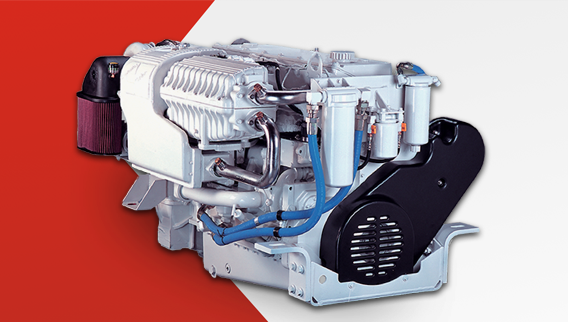Here’s some basic, but important, advice from Skipper Tips about how to make sure that all is well once you start your boat’s diesel engine(s):
You turn the key, push the diesel engine starter button and your engine starts just like you expect it to. But did you realize that you have seven quick checks to make that could spell the difference between a trouble-free day or a long, slow tow back to the marina dock? Follow these seven tips from marine diesel guru Peter Compton:
1. Watch for Exhaust Water. Look over the side. Make sure you have water flow from the exhaust outlet. On some boats, the water will spit instead of flow. As long as you see water flow, your engine will stay cool.
2. Glance at Your Oil Pressure Gauge. Oil is the blood of your engine. Without it, your engine will seize up, overheat, destroy its innards, and be ready for the scrap heap in no time. Check the oil gauge within the first few seconds. Normal range lies between 40 and 60 psi. Often, your pressure will be higher at startup until the engine warms up. Check your engine manual; follow your manufacturer’s recommendations.
3. Look for Smokey Exhaust. Diesel exhaust should be clear; older diesels may puff out a bit of light colored smoke. Black, blue, or white smoke indicate more serious problems that should be addressed right away.
4. Feel the Raw Water Pipe. Look on the top, aft side of your engine for a bent pipe between the main engine body and the big exhaust hose. This raw-water pipe feeds spent exhaust water from your engine to the exhaust hose, which carries it aft and over the side. Place your hand on the bent pipe. It should feel warm to the touch. If cold (no exhaust flow) or hot (overheating), shut the engine down. Check to make sure you have opened the raw water seacock. Inspect the sea water strainer for blockage. If both are clear, you might have a blocked intake on your hull.
5. Shine a Light for Leaks. Open the engine access hatch and shine your light from top to bottom. Look for leaks at the coolant cap, seals on the engine body, hose-to-fitting joints, high-pressure hoses, and injectors. Drop to the engine drip pan. Do you see water or fluid dripping? Move aft to the packing gland. Drip type glands should have a drop or two each minute, but no more.
6. Inspect for Unusual Vibration. Before you cast off, check the transmission in forward, neutral, and reverse gear. Assign a crew to man the helm and engage the shifter at idle ahead, back to neutral, then idle astern. Your engine should move through each position without loud clunking of the transmission or excessive vibration.
7. Read Your Other Gauges. Once water circulates, water temp should read normal temps (about 165° – 180°–check your manual). Voltage should read between 12 – 14 and Amps should be on the positive (+) side of the 0. Check your engine manual and follow the specifications recommended by the manufacturer for engine temperature, oil pressure, and voltage.
(A Cummins QSM11 715-hp diesel is pictured.)
Read more: http://skippertips.com




